Why are they important in व्युत्पत्तिः (etymology) ?
Etymological exploration in Samskritam are approached from multiple angles
Based on the tweet below, let us explore a practical example

Let us take “Engine”
संस्कृते यन्त्रम् इति।
उपकरणम्, साधनम्, विलालः अपि।
यन्त्रम् is derived etymologically through 2 routes – one through the ‘normal’ route and the other through Unadi Sutras
What are these approaches? What is Unadi Sutra? Why is it useful?
Engine as given in MW
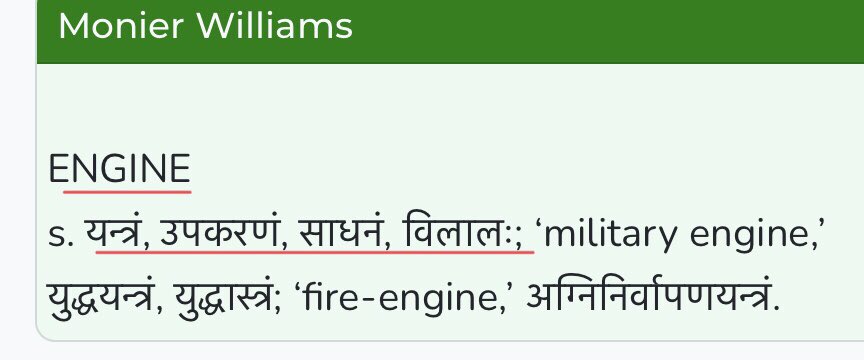
Kalpadruma says यच्छत्यत्रेति OR यम+त्र via Unadi ४।१३३
Shabdasagara says यत्रि+अच्
Apte shows यन्त्र्+अच् for यन्त्रम् and यन्त्रति or यन्त्रयति+ते for यन्त्र्
As seen, there are multiple approaches
A] using a धातुः / root using ‘regular’ derivation
B] using Unadi sutra




Dhatus
First let us look at dhatus
धातुपाठः lists all dhatus or roots ~2000 in number
https://ashtadhyayi.com/dhatu/

Looking at the etymology of यन्त्रम् we see two different dhatus at play
There is यम् -> यमँ उपरमे – to resist/hinder & यन्त्र् -> यत्रिँ सङ्कोचे – to restrain, to shy
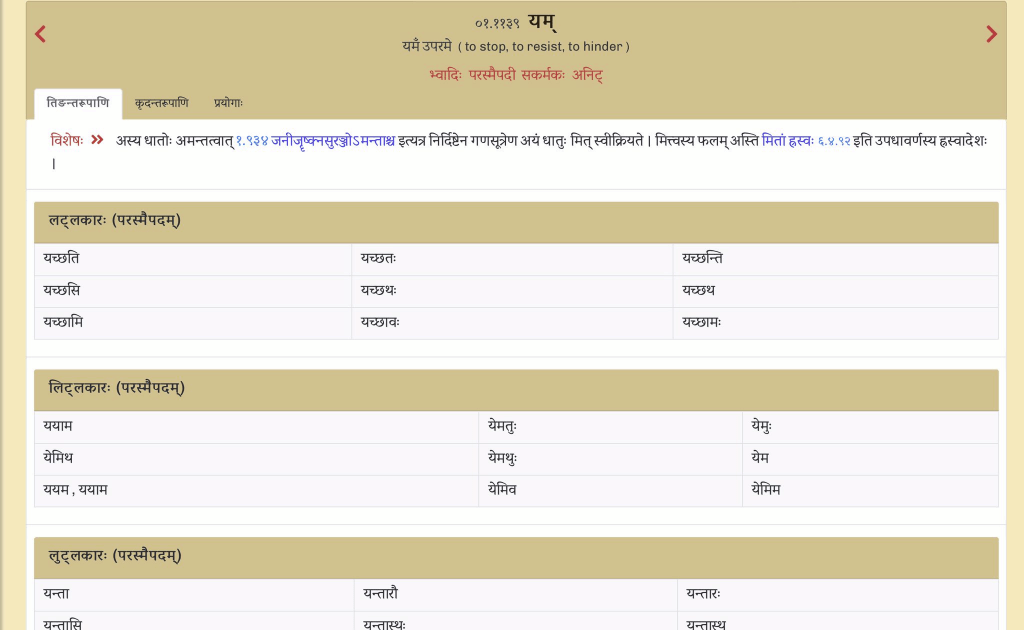
यम् gives rise to यच्छति with the meaning RESIST (diff. from ‘यच्छति give’)
यन्त्र् gives rise to यन्त्रयति or यन्त्रति RESTRAIN

You can derive the word यन्त्रम् from both dhatus via different routes
१ धातुः यन्त्र् (यत्रिँ सङ्कोचे restrain) + अच्। That which यन्त्रयति is यन्त्रम्
२ धातुः यम् (यमँ उपरमे resist) + त्र [an Unadi प्रत्ययः]
The first process of deriving यन्त्रम् via यन्त्र् (यत्रिँ सङ्कोचे) + अच् is part of the tightly regulated ‘regular’ Ashtadhyayi derivation process

The second process is to derive यन्त्रम् via धातुः यम (resist) + त्र [an Unadi प्रत्ययः]
The Unadi derivation is considered to be ‘looser’ since there is flexibility around usage & rules
Unadi sutra ४।१६६ says गुधृवीपचिवचियमिसदिक्षदिभ्यस्त्रःत्र।
This means -> To dhatus like गु (गुङ् शब्दे) or धृ (धृङ् अवस्थाने) & यम् etc. add त्र
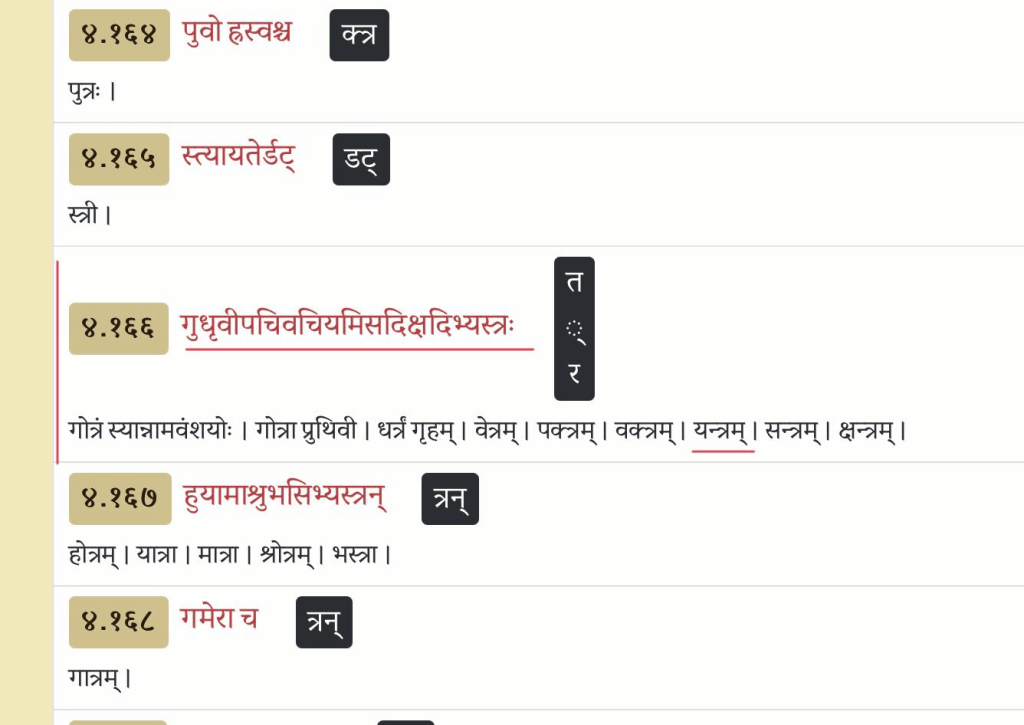
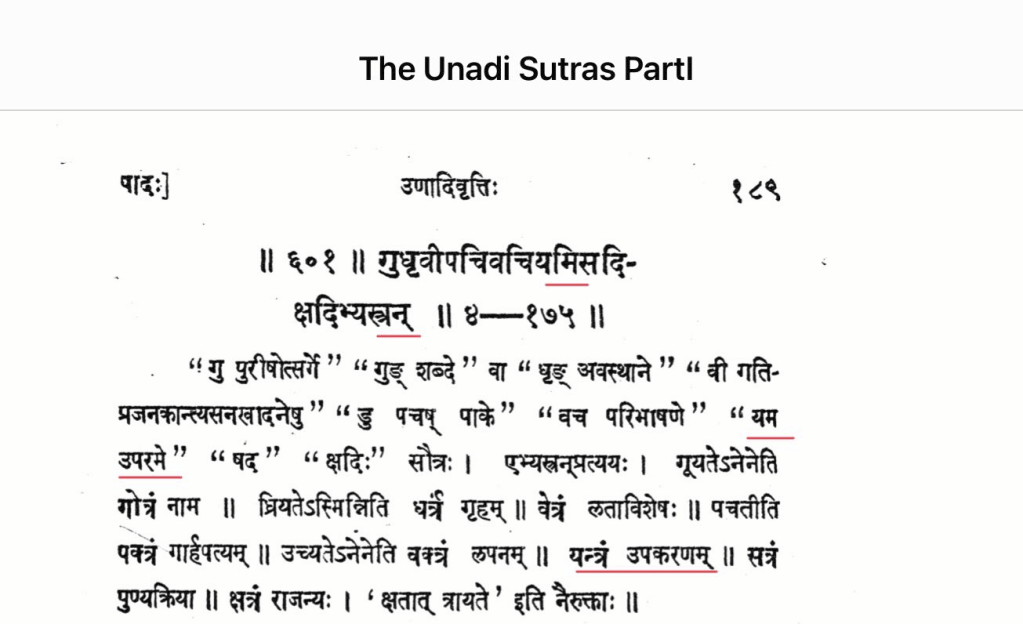
So if we take the dhatu यम् -> यमँ उपरमे and we add त्र we get यन्त्रम् [उपकरणम्]
अहो महाद्भुतम् !
We get derivation & etymology for यन्त्रम् (engine) thusly!
Now the question is – why do we have Unadi sutra? Why not just the ‘regular’ process?
This goes to very ancient times..as we know, सम्सकृतम् is really ancient
The Rules of Etymology
The basic संस्कृतम् rule is EVERY WORD is traceable to a specific धातुः।
This approach and rule to etymology requires a large number of grammatical rules to be made in order to clearly derive each word from a धातुः। The word lists become quite voluminous
However, as time went by & grammar became more ‘scientific’, brevity became critical
The lists were forgotten & connection between धातुः & प्रत्ययः for many words forgotten

Unadi Sutras in the Sanskrit Grammatical Tradition – Kanshi Ram
Unadi Sutras are a mechanism to regain this forgotten ‘word-root’ framework such that all संस्कृतम् words are traceable to existing धातवः।
All ‘difficult’ to derive words were resolved using Unadi Sutras
Since ‘original’ connections were lost, Unadi sutras use approximations
There were multiple intellectual battles over the nuances & correctness of these derivations.
Some were quite bitter!
Maharshi Panini could easily have generated additional rules for deriving the words which were being derived using the Unadi derivation process. This would have significantly expanded the number of Sutras in the Ashtadhyayi beyond the current 4000 odd sutras
However, he ‘chose’ to be conservative/mindful of tradition since the ‘concept of Unadis’ were definitely pre-Paninian, even though they may have been called under different names
So we see that the Ashtadhyayi takes a very pragmatic view of handling Unadis and Maharshi Panini has given substantial leeway to the ‘flexibility’ & looseness of Unadi sutras
There are also significant differences of opinion as to whether Unadi sutras are pre-Paninian or whether Maharshi Panini actually defined Unadi Sutras
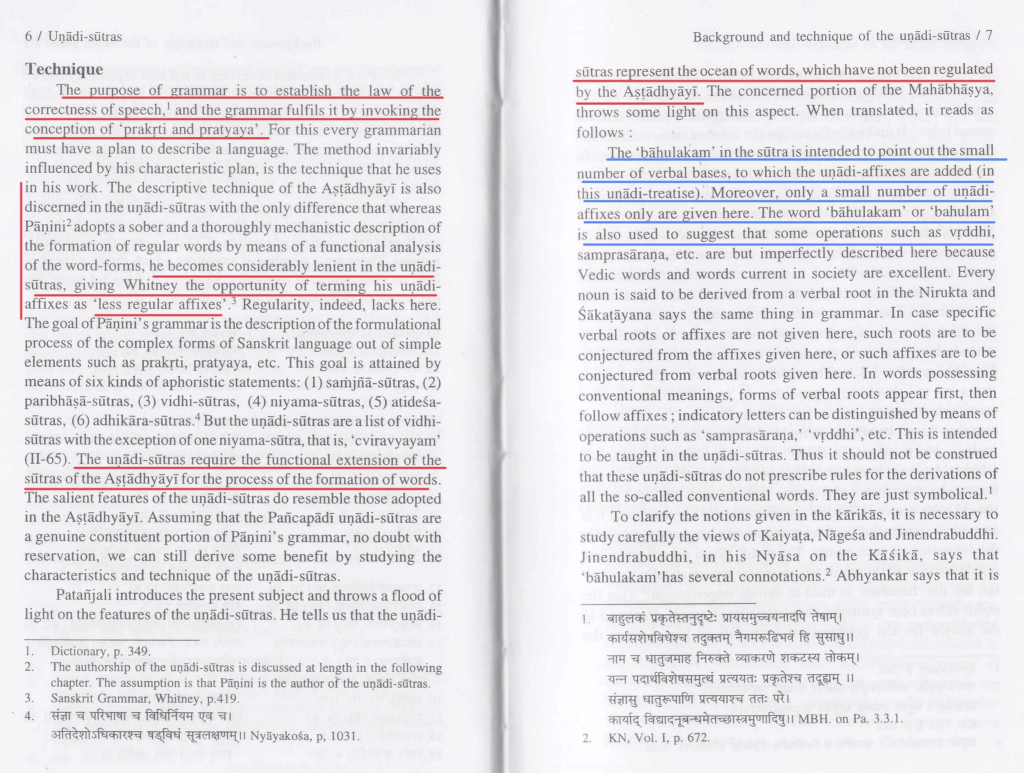
Unadi Sutras are defined in Ashtadhyayi from उणादयो बहुलम् ३।३।१
It is important to note that Unadi प्रत्ययाः are attached to only few defined धातवः। Not all dhatus will accept Unadi Pratyayas.
बहुलम् is because the application is general across a ‘few’ धातवः।
A lot of common words are derived from Unadi Sutras


So in यन्त्रम्, we saw यम् (धातुः) + त्र (उणादि प्रत्ययः) -> यन्त्रम्
It is interesting to note the त्र is added to only few धातवः defined in the Unadi sutra under गुधृवीपचिवचियमिसदिक्षदिभ्यस्त्रः – > गुङ् धृङ् वी डुपचष् वच यम षद क्षदि etc.
Similarly त्रन् ।णित्रन् & so on & so forth as shown below
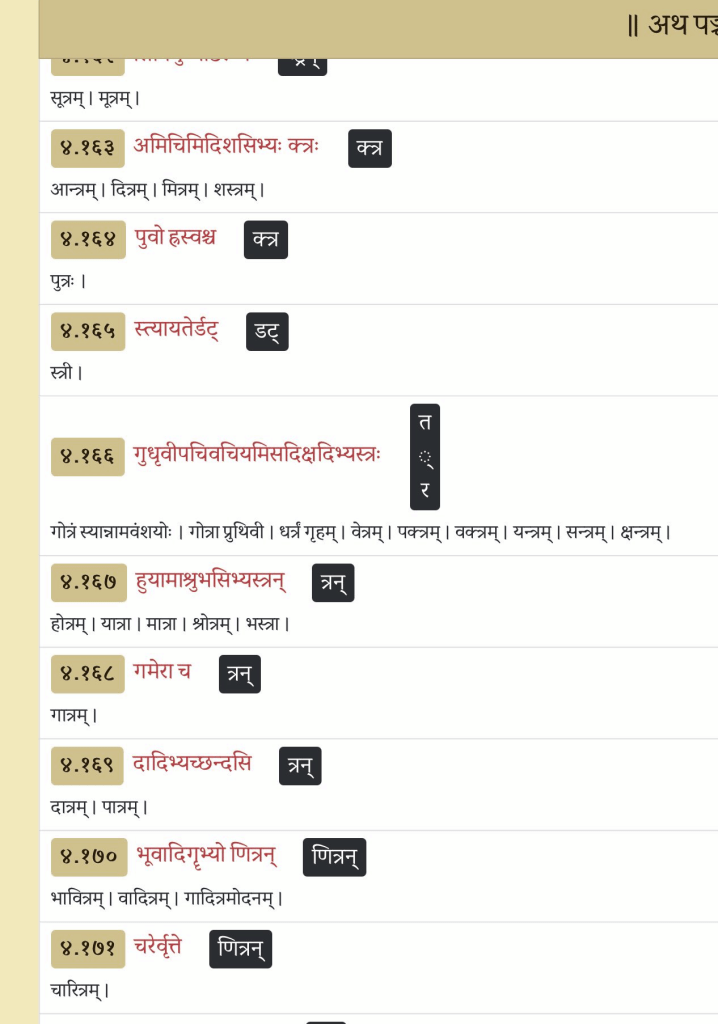

Now why the name Unadi ?
Because, the first प्रत्ययः in this list is उण्।
Hence उण् et. al -> उणादि
कृ + उण् – कारुः [करोतीति कारुः] शिल्पी कारकश्च।
वा + उण – वायुः [वातीति वायुः]
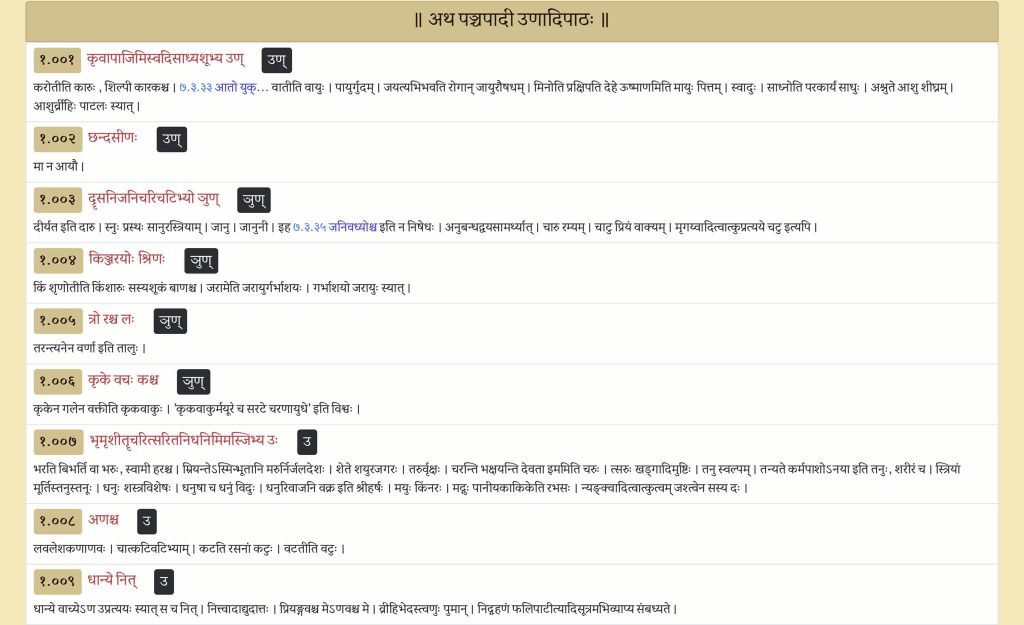
Post Script
I cover some aspects of the sophistication involved in the traditional approach to Sanskrit etymology in Wheat and Witzel – Part 1
Screenshots provided here for contextual background
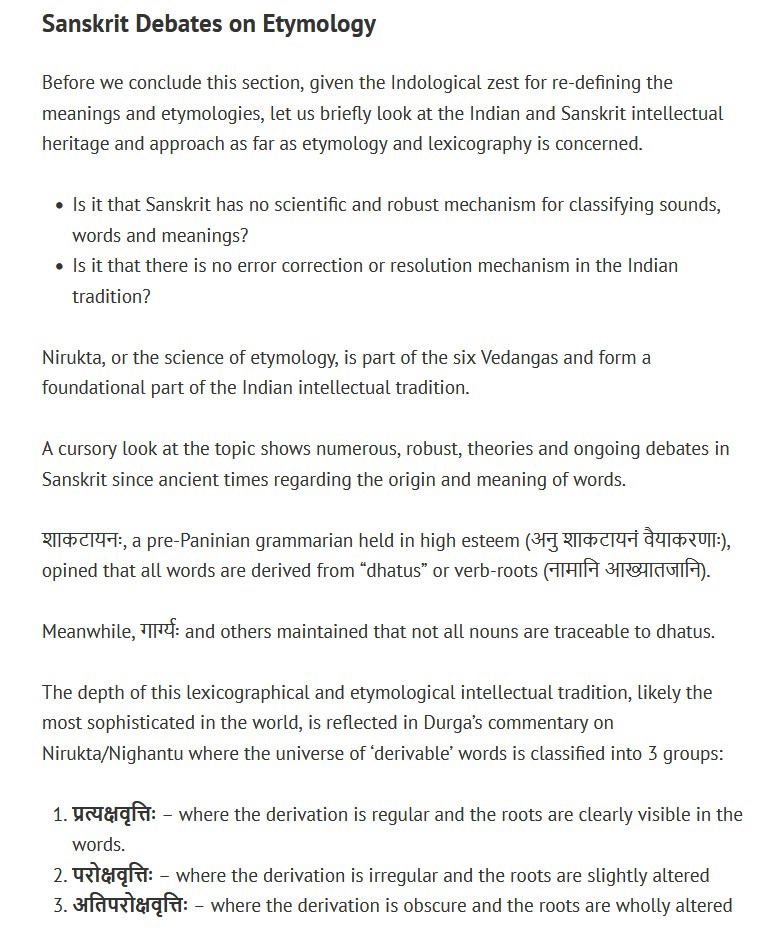


Caveat Lector
Some of the concepts have been simplified for ease of understanding.
All possible errors in interpretation are mine alone. [क्षम्यताम् ]
यदि त्रुटिरस्तिचेत् कृपया वदतात्।
ॐ स्वस्ति अस्तु। जयतु संस्कृतम्। जयतु भारतम्।
